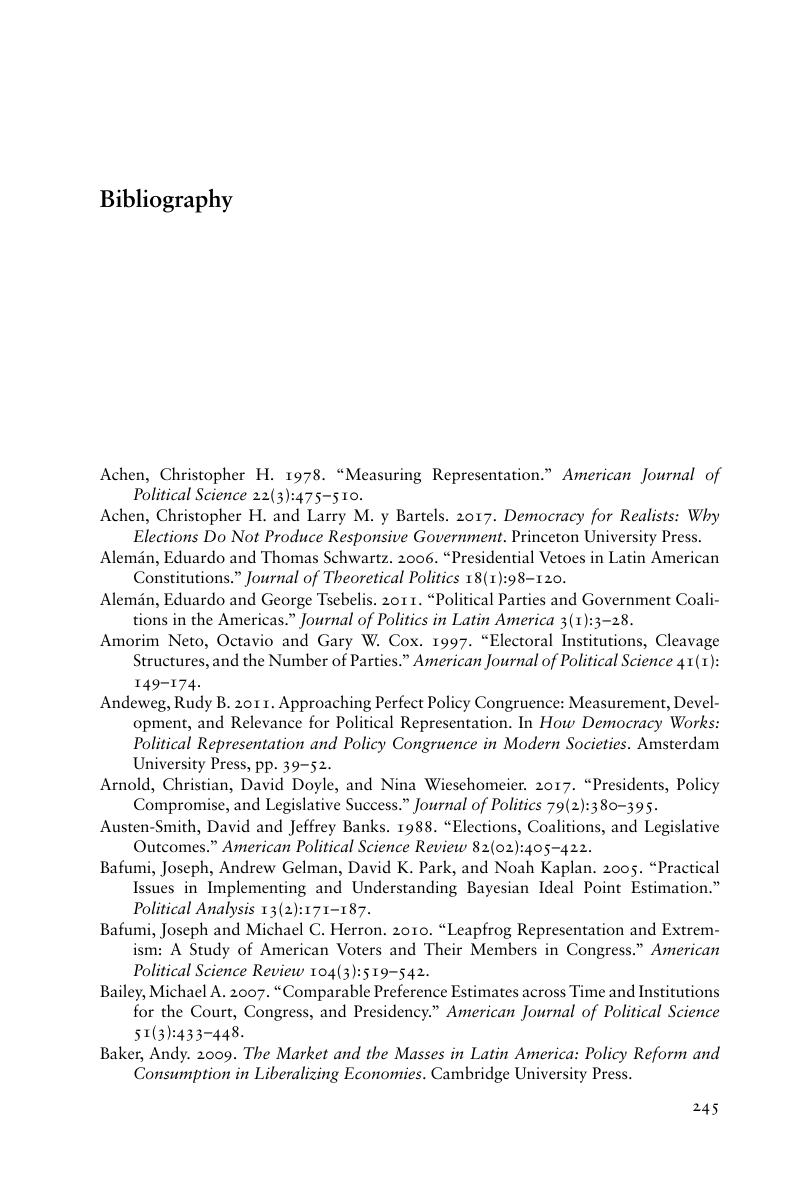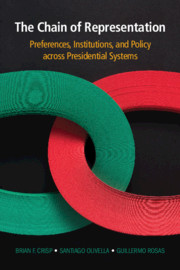Book contents
- Frontmatter
- Contents
- List of Figures
- List of Tables
- Acknowledgements
- Abbreviations
- 1 Studying the Chain of Representation
- 2 Our Solutions to the Challenges of Studying the Chain of Representation
- Part I Stages
- Part II Linkages
- Part III Testing the Chain of Representation
- Appendix Question Wording
- Bibliography
- Author Index
- Subject Index
- References
Bibliography
Published online by Cambridge University Press: 10 January 2020
- Frontmatter
- Contents
- List of Figures
- List of Tables
- Acknowledgements
- Abbreviations
- 1 Studying the Chain of Representation
- 2 Our Solutions to the Challenges of Studying the Chain of Representation
- Part I Stages
- Part II Linkages
- Part III Testing the Chain of Representation
- Appendix Question Wording
- Bibliography
- Author Index
- Subject Index
- References
Summary

- Type
- Chapter
- Information
- The Chain of RepresentationPreferences, Institutions, and Policy across Presidential Systems, pp. 245 - 252Publisher: Cambridge University PressPrint publication year: 2020



